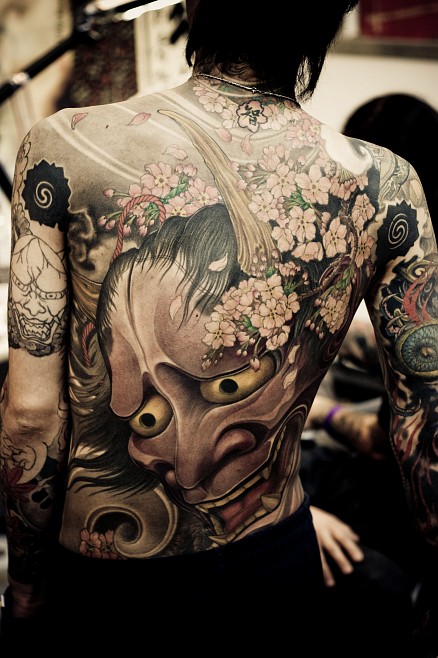Want a traditional tattoo from Japan? Read on to discover the legacy associated with Traditional Japanese tattoo art.
The art of tattooing has a long and rich history in Japan. The practice of making tattoos has been a prominent part of the Japanese culture although the perception of the art form has changed over the years.
In Japan the art form goes by a couple of different names. Irezumi and Horimono are the most popular names for traditional Japanese tattoo art. Traditional Irezumi is the practice of tattoo making on large parts of the body such as the back. The Japanese are also known for their full body tattoo suits.
It should be noted that the tattoo art had a very negative connotation associated with it for the vast majority of the Japanese people. This was largely due to the influence of con Confucianism and Buddhism. In Japan having a tattoo means that you are either part of the Japanese mafia known as Yakuza or a low class macho man.
History of Tattoos in Japan
The earliest traces of the art of tattooing belong to the Ainu people who were amongst the early settlers of Japan. The Wa people is another tribe that was known for its full body tattooing practice. The history of tattoo art dates back to 1700 years ago.
The highly advanced Chinese neighbors of the Japanese thought that the practice of tattooing was in fact a barbaric art. With the transition of Buddhism from China to Japan they too adopted the same perception for the art of tattooing. Tattoos were then used to tag the criminals as a means of punishment.
It was during the Edo period that Japanese tattoo art really begin to flourish as part of the floating world culture. Prostitutes would use tattoos to adorn themselves in order to attract their potential clientele. Firemen and laborers were also seen labeled with body tattoos.
It was in the 18th century that tattooing became an official punishment for those who transgressed the law. This was a direct replacement of amputation of the nose and ears. A ring tattoo on the forearm was placed for every offense and in other cases a character tattoo would be drilled on the criminal’s forehead. It was the Meiji government that abolished the practice of tattooing criminals in 1870.
Such a punishment was giving rise to a new class of outcasts that were looked down upon by society. Amongst the most common criminals of those times were the ronins; the master less samurais. This outcast clan formed the basis of the Japanese mafia as they had no other choice but to organize themselves in gangs and conduct crimes.
Today however we find that the concept of tattooing has drastically changed from what it used to be back in those years. Although it continues to have a negative connotation for the majority in Japan it is increasingly being taken as a means of making a fashion statement.
This turnaround has come as the result of many silver screen flicks that have portrayed tattoos to be something fashionable. The hip hop culture of the west has inspired a large number of the youth from these countries to get themselves tattooed as a means of making a fashion statement. The Japanese, being masters at the art are now cashing in on the practice although they themselves by and large detest it.





